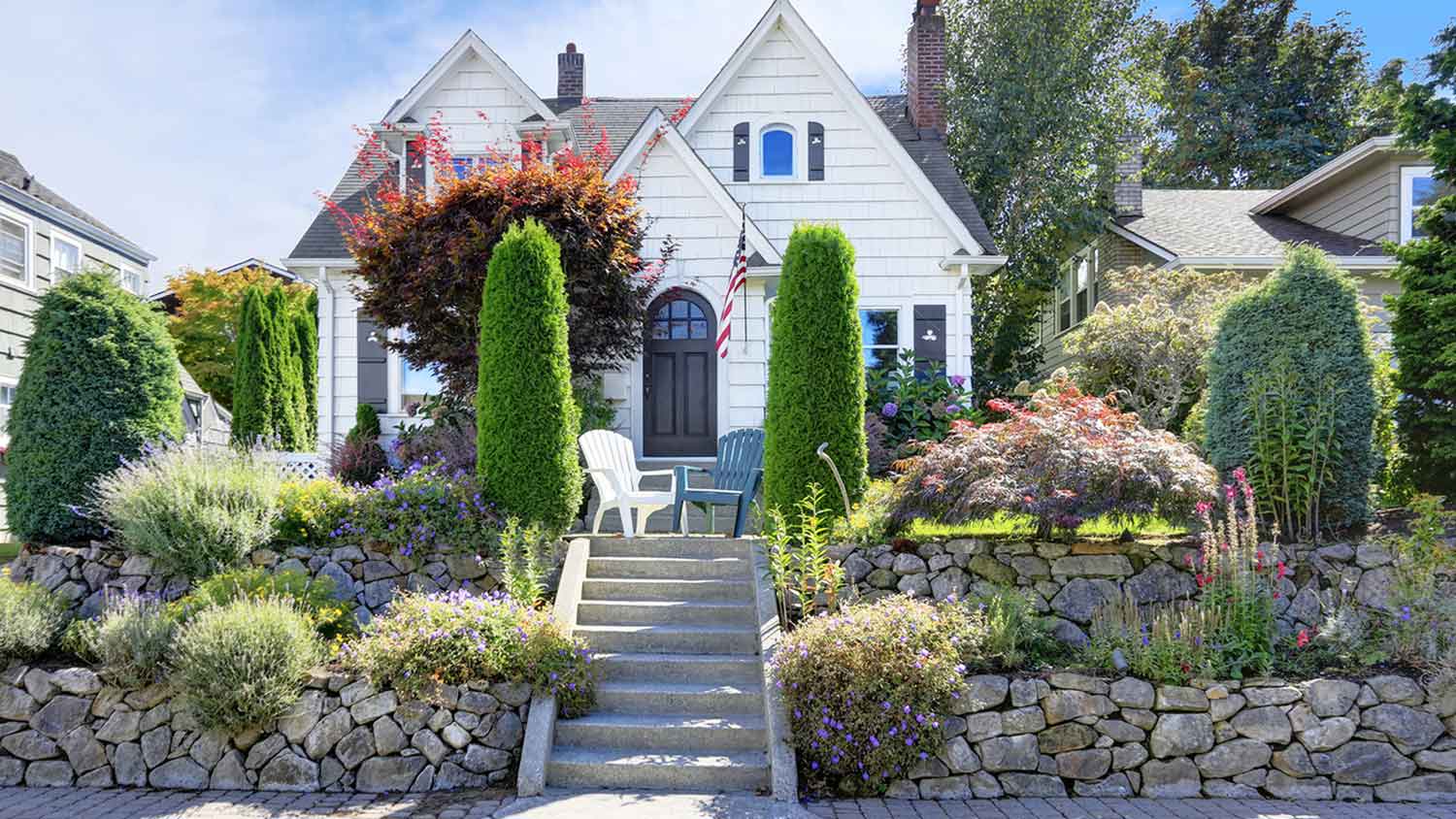
Retaining wall repair cost can vary widely based on the age and condition of the wall being restored. Learn why finding the right pro is important for getting the job done.
Make sure your barbecue doesn’t get hit with a flood warning


Proper drainage under concrete pavers prevents water damage.
Place pavers on a slight slope to help water run away from your house.
Traditional drains and pipes are also an option.
When it feels like summer is right around the corner and you’re ready to boost your backyard’s curb appeal, it might be time to install concrete pavers to create an optimal patio space for barbecuing, socializing, and lounging. Coming in a range of sizes, colors, and shapes, pavers resist cracks, prevent the growth of vegetation, and ensure longevity—regardless of traffic or weather conditions.
Before beginning your patio project, however, you need to understand how drainage under pavers works to prevent water damage that could create a big headache and cost you thousands of dollars to repair. Read on to learn how to create proper drainage under your pavers before you place them.
Water can be a home’s worst enemy. A build-up of moisture around your home can damage your foundation and your landscaping, cause mold and mildew, put you, your family, and your pets at risk of slipping and falling, and much more.
In addition, if you don’t have proper drainage, you might find your patio pooling water, making your favorite relaxation area undesirable to you but desirable to mosquitoes, and generally annoying to clean up after a rainstorm. Over time, too much water can erode the concrete pavers you have worked so hard to install.
There are a few ways to create proper drainage under your pavers to prevent water damage.

Before you install your pavers, you need to install a layer of gravel and sand. Make sure to dig into the ground 6 inches in addition to the height of the pavers to accommodate the gravel and sand.
After adding the initial 2 inches of gravel to the entire marked-out patio space, compact and then add an additional 2 inches of gravel to the area that should be higher—the patio area closer to your home. Then, adjust the gravel so it thins out as you get closer to the furthest away point of the patio, creating a natural slope.
“The sand should be placed in the same way,” says Tara Dudley, owner of Plant Life Designs. “Ideally, you want the area to be graded at one-half inch for every 4 feet, and you can use a level to guide you as you go.”
If you are installing pavers over clay or silt-based soil, or there is no way to create a slope away from your home, you should install geotextile (sometimes known as filter fabric). Geotextile is made up of permeable, plastic threads that block underlining soil particles, while simultaneously allowing passing water to move through the threads uninterrupted.
The textile prevents the underlying soil from mixing in with the base, helping to maintain the integrity of your paver patio. Geotextile can extend the life of your paver base by many years and is especially useful in high traffic areas with a lot of stormwater accumulation, such as paver driveways.
A dry well, made from a perforated plastic barrel surrounded by stones and connected to pipes, can be installed in a hole at the lowest point in your yard to slowly collect water and give it time to filter into the soil, instead of pooling in large areas.
You can also install a traditional patio drain that connects to a drain pipe. The pipe should be placed under the pavers and lead out to wherever you want the water to run. There are many types of drain systems on the market, varying in size, color, and price.
Ask an Interlocking Concrete Pavement Institute (ICPI) certified project manager or local paver installer to assist with selecting the best one for your patio, and make sure to ask about warranties and installation requirements.
From average costs to expert advice, get all the answers you need to get your job done.

Retaining wall repair cost can vary widely based on the age and condition of the wall being restored. Learn why finding the right pro is important for getting the job done.

Porcelain pavers are a high-end option for your home’s hardscaping that can completely transform your outdoor space. Here’s how much porcelain pavers cost.

Pea gravel is a good-looking, versatile landscaping stone that's a favorite of the pros. Read about how much pea gravel costs for both installation and the stone itself.

If you’re looking to upgrade your patios, driveways, and walkways with an eye toward sustainability, you need to know what permeable pavers are.

Looking to beautify your outdoor area with a walkway? Use these stepping stone walkway ideas for inspiration for adding a bit of tranquility to your space.

Reviewing a contractor’s quote is essential when remodeling. By following these five efficient steps, learn how to tell a contractor their price is too high.